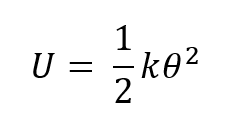Tension springs v torsion springs
Contents |
Introduction
Although sounding similar, tension and torsion springs are completely different. Tension springs are manufactured to operate with tension; as tightly wound coils, they stretch to a specific length as torque is applied to them. When in an unloaded position, the spring loops are touching with either a hook or a loop that is attached at one of the ends. The springs stretch when this attachment is directed with force. The springing action is caused when the components are pulled apart and the springs attempt to hold themselves together. After the force is stopped, they return to their original position.
Torsion springs are coiled springs, which work due to a twisting or torsion rotational motion. This allows for an object to store mechanical energy as it is twisted, exerting force in the opposite direction depending on the angle that it is twisted. A helical looped design is the most common design for torsion springs, which consists of a coiled metal wire that is twisted tighter and tighter by sideways forces that are applied on either a left-hand or a right-hand helix.
Tension Springs
Most springs follow Hooke’s Law of elasticity, which states that the extension of an elastic rod is linearly proportional to the force, or torque, used to stretch it. The law is held approximately when the deformation is considered to be small in comparison to the overall length of the rod. The equation used to represent the force of a fully compressed spring is the following:
In which:
E – is Young’s modulus
d – is the spring wire diameter
L – is the free length of the spring
n – is the number of active windings
v – is Poisson’s ratio
D – is the spring’s outer diameter
Torsion Springs
Torsion springs work by either twisting or torsion, in which they store mechanical energy when twisted. When they are twisted, the springs exert torque in the opposite direction in a proportional amount to the angle that they are twisted.
These springs obey Hooke’s Law, as long as not twisted beyond the elastic limit:
In which τ represents the exerted torque by the spring in newton-metres, k is a constant of newton-metres units, and θ represents the angle of twist from the equilibrium position in radians.
In joules, U, the energy stored in a torsion spring is represented by the following equation:
Uses of Tension Springs
Uses of Torsion Springs
--European Springs and Pressings Ltd 09:44, 25 Sep 2017 (BST)
Related articles on Designing Buildings Wiki
- Compression springs.
- E-spring.
- Flat springs.
- Key qualities of springs.
- Spring materials.
- The importance of gas springs.
- Using springs in construction to prevent disaster.
- The Difference Between Tension and Torsion Springs
- The Multiple Uses of Compression Springs
- The properties of tension springs.
- Using Springs in Construction to Prevent Disaster
- Torsion Springs and Their Benefits
Featured articles and news
Infrastructure that connect the physical and digital domains.
Harnessing robotics and AI in challenging environments
The key to nuclear decommissioning and fusion engineering.
BSRIA announces Lisa Ashworth as new CEO
Tasked with furthering BSRIA’s impressive growth ambitions.
Public buildings get half a million energy efficiency boost
£557 million to switch to cleaner heating and save on energy.
CIOB launches pre-election manifesto
Outlining potential future policies for the next government.
Grenfell Tower Inquiry announcement
Phase 2 hearings come to a close and the final report due in September.
Progress from Parts L, F and O: A whitepaper, one year on.
A replicated study to understand the opinion of practitioners.
ECA announces new president 2024
Electrical engineer and business leader Stuart Smith.
A distinct type of countryside that should be celebrated.
Should Part O be extended to existing buildings?
EAC brands heatwave adaptation a missed opportunity.
Definition of Statutory in workplace and facilities management
Established by IWFM, BESA, CIBSE and BSRIA.
Tackling the transition from traditional heating systems
59% lack the necessary information and confidence to switch.
The general election and the construction industry
As PM, Rishi Sunak announces July 4 date for an election.
Eco apprenticeships continue help grow green workforce
A year after being recognised at the King's coronation.
Permitted development rights for agricultural buildings
The changes coming into effect as of May 21, 2024.


























